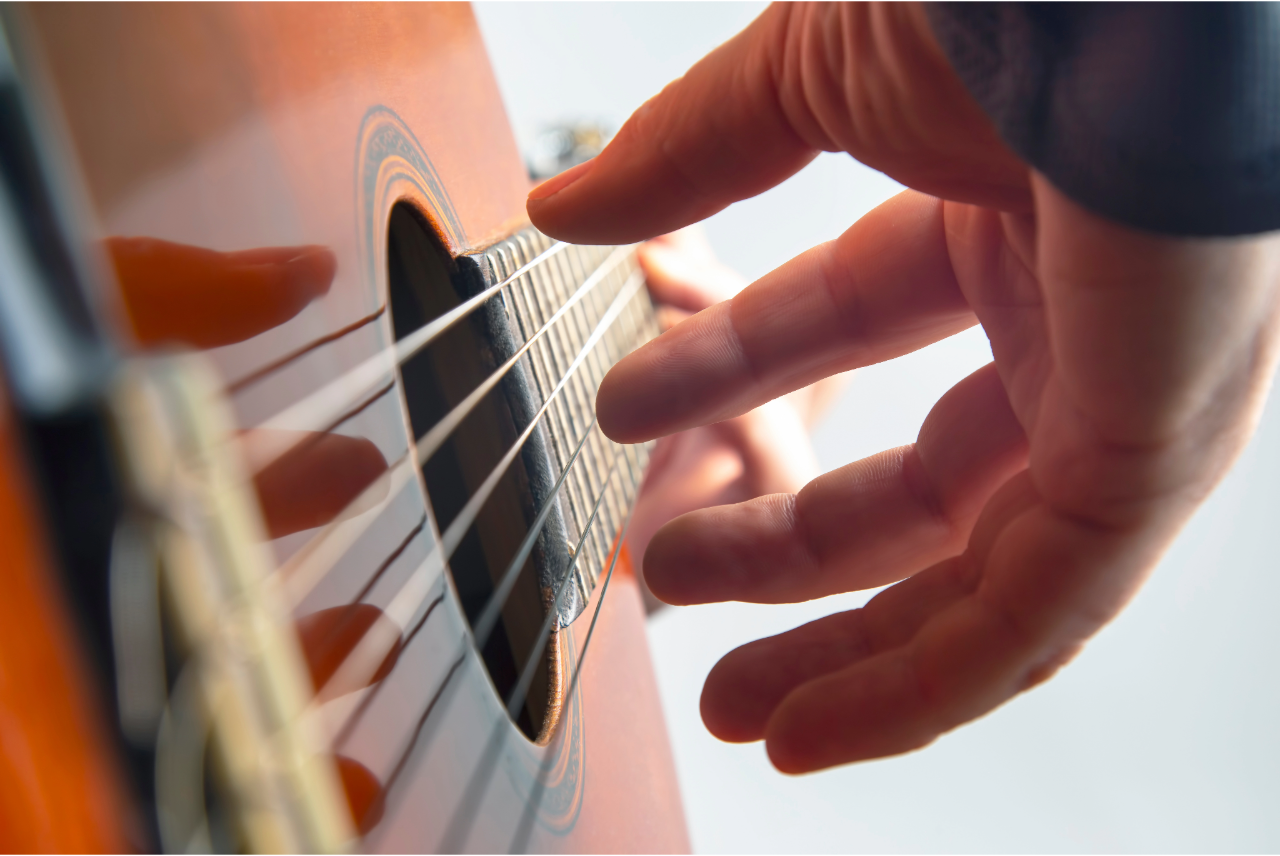As important as it is to learn how to produce sounds on the guitar, it is equally crucial to learn how to stop them—to mute them effectively. The reasons for mastering muting techniques are purely musical, involving note values, articulation, style, and more. For example, if a note is written as a crotchet, it should last for one beat; if it is a minim, it should last for two beats, and so on. The same principle applies to rests. Of course, there are many instances where notes and rests may not be performed exactly as written, depending on the style or other musical factors.
Techniques for Muting Strings
There are various ways to mute strings on the guitar, using both the left and right hands. Here are a few common methods:
Left Hand Muting
- Muting with the Inner Part of the Fingers: To mute multiple strings, touch the desired number of strings with all fingers, as if performing a barre chord with all fingers simultaneously. This can also be done with a single finger, or just part of a finger. For example, if you want to mute the fourth open string (“D”) while playing a “C” note on the fifth string at the third fret, you can slightly angle the third finger so that its pad lightly touches the fourth string without pressing it.
- Releasing the String: If the note to be muted is not an open string, you can simply release the pressure from the left-hand finger while still maintaining contact with the string. This technique works for individual notes, as well as chords.
Right Hand Muting
- Muting with the Entire Palm: The inner side of the palm touches all the strings, stopping the sound. However, this technique requires care, as the guitarist might unintentionally slap the strings rather than gently mute them. If slapping is not the desired effect, the palm should be placed on the strings more softly.
- Muting with the Right Side of the Palm: This is typically done close to the bridge, where string vibrations are minimal. This method reduces unwanted sounds and is often used at the end of a piece or section. The palm rolls over the strings to completely stop their sound.
- Muting with Finger Pads: A string can also be muted by placing the pad of a finger on it, often the same finger that just played the note. This method is especially effective for muting bass strings with the thumb’s pad.
Practicing Muting
Mastering muting techniques can elevate your guitar playing to a new level. You can start by experimenting with one or several muting methods to become familiar with them. However, the best way to practice muting is within a piece or an étude, where the necessity of muting arises naturally in a real musical context. Once you choose a specific way to mute a particular note, stick with it and incorporate it into your practice. Don’t neglect this subtle but essential movement—integrating it will refine your overall playing technique.

Leave a Reply